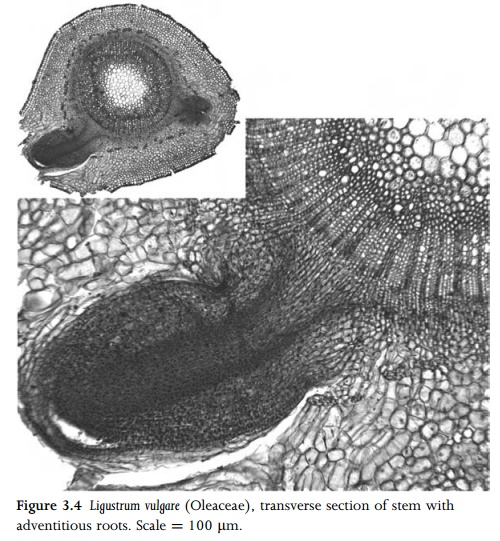Chapter: Anatomy of Flowering Plants: An Introduction to Structure and Development : Root
Root Epidermis and Hypodermis
Root Epidermis and Hypodermis
In root apices with closed organization, the root epidermis is
associated either with cortical cells (in most monocots) or with cap initials
(in most other angiosperms); in root apices with open organization the precise
origin of the root epidermis is relatively difficult to determine.
In eudicots the root epidermis (rhizodermis) is typically uniseriate, as
in other parts of the plant. In monocots the root epidermis is normally
persistent and remains as the outermost layer of the root. A velamen is particularly
characteristic of aerial roots of Orchidaceae and Araceae. Velamen cells of a
mature root are dead, and often become saturated with water for storage
purposes, whereas a persistent rhizodermis consists of living cells. A velamen
is usually multilayered but can also be one-layered; the cell walls are often
partly thickened and sometimes lignified. In Orchidaceae, velamen cells
frequently possess wall striations.
Most
angiosperms possess absorptive root hairs in under-ground roots, usually
confined to a region about a centimetre from the root apex, beyond the
meristematic region, but in an area where cells are still enlarging. In
general, root hairs persist for only a limited period before withering. This
region of the root is the most active in absorption of water, and the root
hairs serve to present a greater surface area for this purpose. Root hairs are
formed from epidermal cells by apical intrusive growth. In some plants only
specialized root epidermal cells (trichoblasts) are capable of root hair
production. Trichoblasts are formed inmeristematic epidermal cells that overlie
the junction between two cortical cells. Thus, in many species the
root epidermis is dimorphic and clearly differentiated into short cells (trichoblasts)
and long cells (sometimes termed atrichoblasts), as in Arabidopsis thaliana.
Some other species (including many monocots such as species of Asparagales and
Araceae) instead possess a dimorphic hypodermal layer immediately below the
root epidermis63; this is normally interpreted as the outermost
cortical (exodermal) layer but may represent the innermost layer of a
multilayered persistent rhizodermis. The hypodermal short cells resemble
trichoblasts, and are probably transfusion cells.

Related Topics